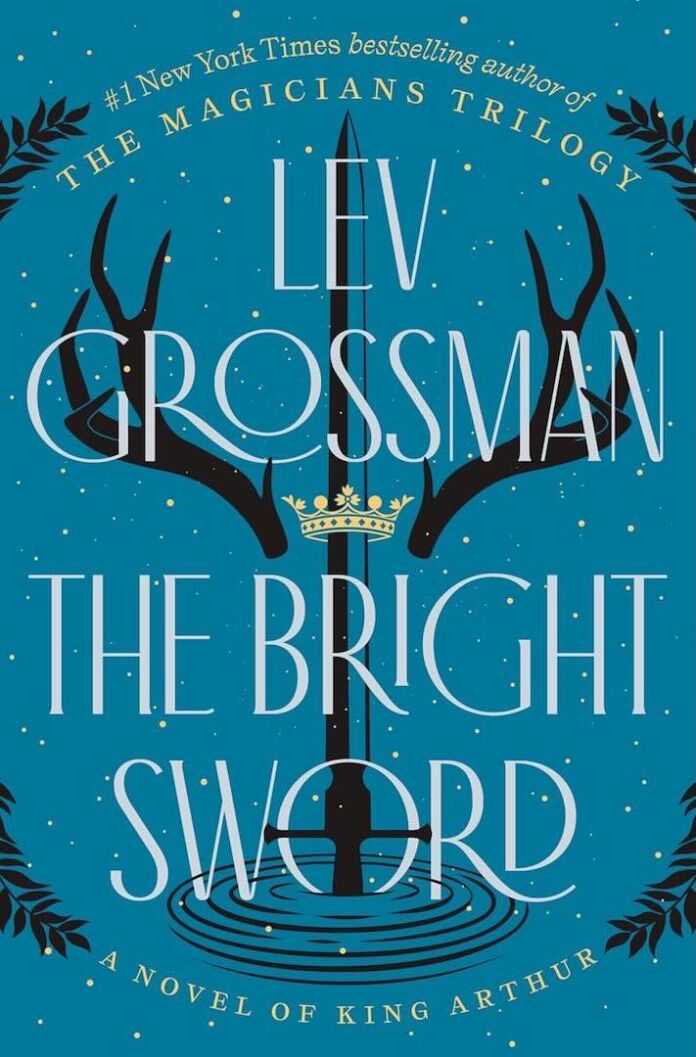In The Bright Sword, Lev Grossman ventures into the shadows that fall after the sunset of Arthurian legend, crafting a masterful exploration of what happens when the heroes have fallen and those left behind must pick up the pieces. This isn’t just another retelling of Arthur’s story—it’s an intimate examination of the cost of legends and the weight of inheritance, both magical and mundane.
Overview: The Last Knights of the Round Table
The novel opens with Collum, a young knight from the Out Isles, arriving at Camelot with dreams of joining the Round Table, only to find himself too late—Arthur is dead, and most of his legendary knights with him. What remains is a handful of survivors: the Saracen Knight Palomides, the fool-turned-knight Dagonet, and others who lived in the margins of Arthurian legend. Together with Nimue, Merlin’s former apprentice, they must navigate a Britain that’s rapidly unraveling without its king.
Strengths: A Fresh Perspective on Ancient Tales
Character Development
Grossman excels at breathing life into historical footnotes. His characterization of Collum serves as our entry point into this changed world, while the surviving knights each carry their own compelling narratives. Particularly noteworthy is his treatment of Palomides, whose story of unrequited love for Isolde becomes a meditation on belonging and identity.
World-Building
The author’s vision of post-Arthurian Britain is richly textured, combining historical detail with magical elements in a way that feels both authentic and fresh. The declining influence of Christianity, the resurgence of older powers, and the political machinations of various factions are woven together masterfully.
Thematic Depth
The novel grapples with weighty themes:
- The nature of power and legitimacy
- The tension between Christianity and older beliefs
- The cost of maintaining legends
- The burden of inheritance and expectation
Writing Style: Mastery of Tone
Having previously demonstrated his ability to deconstruct fantasy tropes in The Magicians trilogy, Grossman brings similar skill to Arthurian legend. His prose is elegant yet accessible, mixing moments of lyrical beauty with sharp wit and occasional darkness. The multiple viewpoint structure allows for a comprehensive view of this changing world while maintaining narrative momentum.
Areas for Improvement
Pacing
The novel occasionally struggles with pacing, particularly in its middle sections. Some of the questing sequences, while thematically relevant, could have been tightened without losing their impact.
Complex Plot Threads
The numerous political and magical conflicts sometimes become tangled, potentially confusing readers less familiar with Arthurian lore. While this complexity adds depth, it occasionally comes at the cost of clarity.
Character Balance
While the core characters are well-developed, some supporting players, particularly among the antagonists, could have been more fully realized.
Historical and Literary Context
Grossman’s treatment of Arthurian legend shows deep respect for his sources while being unafraid to question and subvert them. His integration of historical elements—from Roman ruins to Saxon politics—grounds the fantasy elements in a convincing reality.
Comparisons to Other Works
Readers familiar with Grossman’s The Magicians will recognize his talent for examining the human cost of magic and power. However, The Bright Sword feels more mature, more grounded in historical reality while maintaining its fantastic elements.
The novel sits comfortably alongside other contemporary Arthurian retellings like:
- The Once and Future King by T.H. White
- The Crystal Cave by Mary Stewart
- The Mists of Avalon by Marion Zimmer Bradley
Target Audience
This book will particularly appeal to:
- Fans of historical fantasy
- Readers interested in Arthurian legend
- Those who enjoy political intrigue in their fantasy
- Readers who appreciate character-driven narratives
Impact and Relevance
The themes of leadership, legitimacy, and the struggle between old and new ways of thinking resonate strongly with contemporary issues. Grossman’s exploration of how societies handle dramatic change feels particularly relevant to modern readers.
Technical Elements
Structure
The novel’s structure, moving between different viewpoint characters, effectively builds a complete picture of a fragmenting Britain while maintaining narrative tension.
Language
Grossman’s prose strikes an excellent balance between period authenticity and readability, never falling into affected archaism.
Final Verdict:
The Bright Sword is a compelling addition to both Arthurian literature and Grossman’s body of work. Despite some pacing issues and occasional complexity, it succeeds in bringing fresh perspective to well-worn legends while telling an engaging story in its own right.
Closing Thoughts
Grossman has created something rare: a fantasy novel that works both as an adventure story and as a thoughtful examination of power, legacy, and change. It’s a worthy addition to the Arthurian canon that manages to find new things to say about these ancient tales.
The novel demonstrates that even in well-trodden literary territory, there are still fresh perspectives to be found and new stories to be told. It’s a reminder that sometimes the most interesting stories happen after the traditional ending, in the spaces between the lines of legend.





